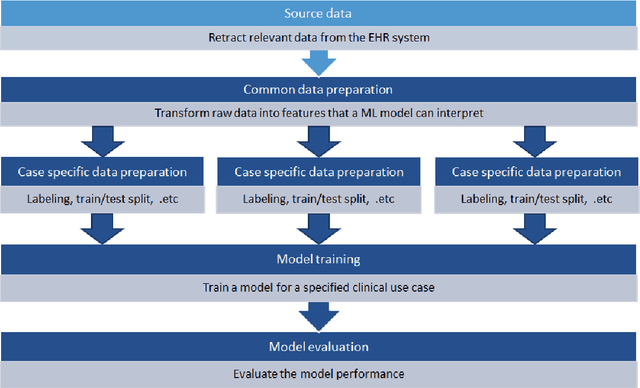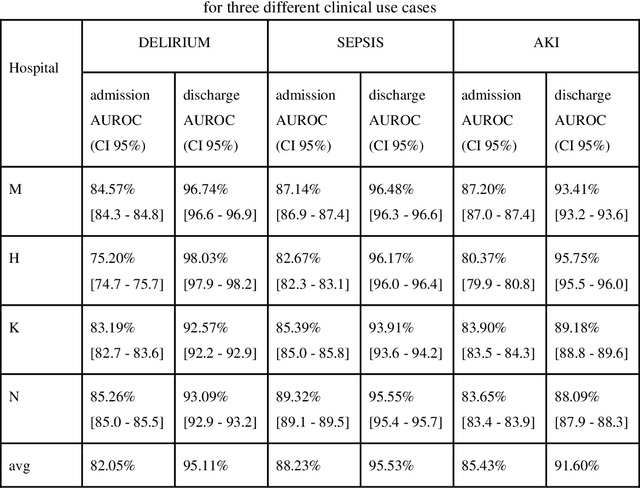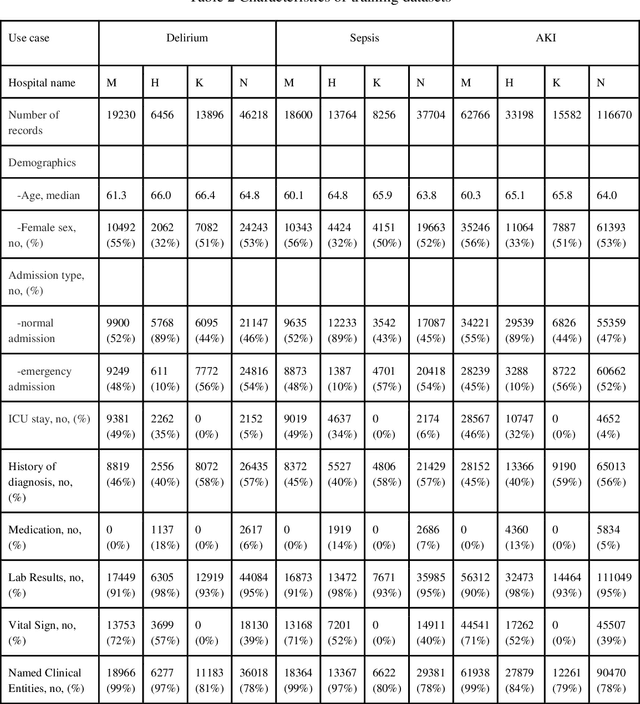Jos De Roo
A scalable approach for developing clinical risk prediction applications in different hospitals
Jan 21, 2021



Abstract:Objective: Machine learning algorithms are now widely used in predicting acute events for clinical applications. While most of such prediction applications are developed to predict the risk of a particular acute event at one hospital, few efforts have been made in extending the developed solutions to other events or to different hospitals. We provide a scalable solution to extend the process of clinical risk prediction model development of multiple diseases and their deployment in different Electronic Health Records (EHR) systems. Materials and Methods: We defined a generic process for clinical risk prediction model development. A calibration tool has been created to automate the model generation process. We applied the model calibration process at four hospitals, and generated risk prediction models for delirium, sepsis and acute kidney injury (AKI) respectively at each of these hospitals. Results: The delirium risk prediction models achieved area under the receiver-operating characteristic curve (AUROC) ranging from 0.82 to 0.95 over different stages of a hospital stay on the test datasets of the four hospitals. The sepsis models achieved AUROC ranging from 0.88 to 0.95, and the AKI models achieved AUROC ranging from 0.85 to 0.92. Discussion: The scalability discussed in this paper is based on building common data representations (syntactic interoperability) between EHRs stored in different hospitals. Semantic interoperability, a more challenging requirement that different EHRs share the same meaning of data, e.g. a same lab coding system, is not mandated with our approach. Conclusions: Our study describes a method to develop and deploy clinical risk prediction models in a scalable way. We demonstrate its feasibility by developing risk prediction models for three diseases across four hospitals.
Validation Rules for Assessing and Improving SKOS Mapping Quality
Oct 15, 2013



Abstract:The Simple Knowledge Organization System (SKOS) is popular for expressing controlled vocabularies, such as taxonomies, classifications, etc., for their use in Semantic Web applications. Using SKOS, concepts can be linked to other concepts and organized into hierarchies inside a single terminology system. Meanwhile, expressing mappings between concepts in different terminology systems is also possible. This paper discusses potential quality issues in using SKOS to express these terminology mappings. Problematic patterns are defined and corresponding rules are developed to automatically detect situations where the mappings either result in 'SKOS Vocabulary Hijacking' to the source vocabularies or cause conflicts. An example of using the rules to validate sample mappings between two clinical terminologies is given. The validation rules, expressed in N3 format, are available as open source.
 Add to Chrome
Add to Chrome Add to Firefox
Add to Firefox Add to Edge
Add to Edge